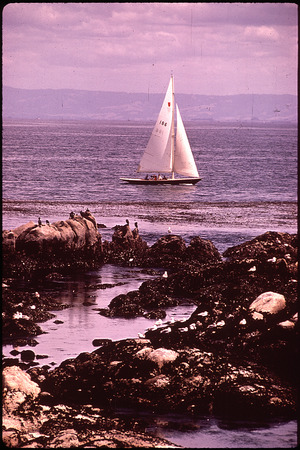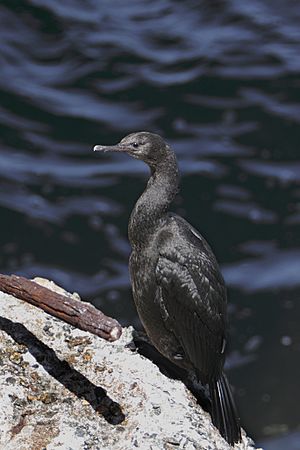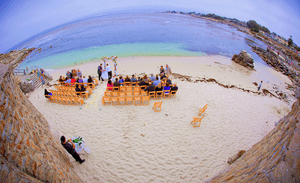Lovers Point State Marine Reserve facts for kids
The Lovers Point State Marine Reserve (SMR) is like an underwater park! It's one of four special ocean areas near the cities of Monterey and Pacific Grove, in Monterey Bay, California. These four protected areas together cover about 2.96 square miles (7.67 square kilometers) of ocean. The SMR protects all the amazing marine life that lives inside its borders. This means no fishing or taking any living things from the water is allowed here.
Contents
How it Started
Lovers Point State Marine Reserve was created in September 2007. It was set up by the California Department of Fish & Game, which helps manage California's wildlife. This reserve was one of the first 29 special ocean areas made as part of the Marine Life Protection Act Initiative. This initiative is a big project that brings people together to create a network of protected ocean areas all along California's coast. The goal is to keep our ocean healthy for the future.
Where it Is
Lovers Point SMR is located right off the coast of the Monterey Peninsula, at the southern end of Monterey Bay. It covers about 0.30 square miles (0.78 square kilometers) of ocean. The reserve is right next to Lovers Point Park, which is a small park on land.
This reserve is one of four protected ocean areas in the Monterey Peninsula region. It sits between the Edward F. Ricketts State Marine Conservation Area and the Pacific Grove Marine Gardens State Marine Conservation Area. A bit further west, you'll find the Asilomar State Marine Reserve. All four of these special areas are part of the larger Monterey Bay National Marine Sanctuary, which is a very large protected ocean area.
Ocean Homes and Animals
The Monterey Peninsula area has many different types of ocean homes for animals. You can find tidepools full of tiny creatures. The sandy beaches are used by harbor seals to have their pups. Offshore, there are thick kelp forests that look like underwater trees. These forests provide safe places for sea otters and many types of fish.
Lovers Point SMR protects these different habitats, including kelp forests, sandy beaches, rocky areas near the shore, and both soft and hard parts of the ocean floor. All these different areas help support a wide variety of marine life.
Fun Things to Do
Millions of people visit the Monterey Peninsula every year to enjoy its beautiful ocean and natural environment. More than 65,000 scuba divers come here because it's easy to get into the water, and they love seeing the wildlife and kelp forests.
The Monterey Bay Aquarium is a very popular place to visit. It has a huge living kelp forest exhibit that is 28 feet (8.5 meters) tall! This exhibit shows many of the same animals you can find in the nearby protected ocean areas. The aquarium also has sea otters, tidepool animals, and sometimes even sea turtles.
Besides diving and visiting the aquarium, people come to Monterey Bay for many other activities. These include kayaking, whale watching, charter fishing, surfing, bird watching, exploring tidepools, and walking on the beach. There's even a local swimming group called the Kelp Krawlers that has a weekly swim at Lovers Point!
California's marine protected areas encourage people to enjoy and learn about the ocean. Activities like kayaking, diving, snorkeling, and swimming are usually allowed, unless there are special rules.
Staying Safe
Sometimes, the beach at Lovers Point might be closed for swimming. This can happen if there are too many germs in the water. You can check the Monterey County Health Department website to see if the beach is open before you visit.
Ocean Science
Scientists are studying some of California's protected ocean areas, including those along the central coast. They want to see how well these areas are working to protect ocean health. For example, similar studies in protected areas near the Santa Barbara Channel Islands have already shown that fish are getting bigger and there are more of them over time. This means the protected areas are helping ocean life recover.
Local universities and research centers are involved in this important work. These include Stanford University’s Hopkins Marine Station, University of California Santa Cruz, Moss Landing Marine Laboratories, and Cal Poly San Luis Obispo. Scientists use different methods to study the ocean, like fishing with hooks and lines, surveying tidepools, using scuba divers to look at the ocean floor, and even using special underwater robots called Remote Operated Vehicles (ROVs).




